Embarking on the journey of dog ownership opens up a world of unconditional love, boundless joy, and, of course, a fair share of responsibilities. Among these responsibilities, one aspect that stands out for both the aesthetic and physical well-being of our furry companions is dog grooming. It’s not just about making them look like they’ve stepped out of a canine salon; it’s a holistic approach to maintaining their health and happiness.
Table of Contents
1. Understanding the Significance of Dog Grooming:
Dog grooming transcends mere aesthetics; it is a cornerstone of responsible pet ownership. Beyond the glossy fur and neatly trimmed nails, regular grooming contributes to a dog’s overall health. It’s a chance for pet owners to develop a deeper connection with their furry friends while proactively preventing potential health issues.
The Bonding Ritual:
Grooming sessions provide a unique opportunity for bonding between pet and owner. As you brush your dog’s coat or carefully trim their nails, you’re not just performing a task but engaging in a shared experience that fosters trust and strengthens the human-animal bond. This bonding time is especially crucial for puppies, helping them acclimate to the grooming process early.
Promoting Skin and Coat Health:
A well-groomed coat is not just about aesthetics; it reflects your dog’s overall health. Regular brushing helps distribute natural oils, preventing matting and promoting a shiny, lustrous coat. Additionally, it allows you to spot any abnormalities or signs of skin issues early on, ensuring prompt veterinary attention if needed.
Preventing Health Issues:
Dog grooming isn’t merely about making your pup look presentable; it’s a proactive measure to prevent potential health issues. Regular brushing aids in detecting ticks, fleas, or any unusual lumps and bumps. Consistent grooming also allows for a thorough check of ears, teeth, and paws, helping identify and address issues before they escalate.
Building a Grooming Routine:
Consistency is vital in grooming. Establishing a regular grooming routine from an early age helps your dog become accustomed to the process, minimizing stress and anxiety. Whether it’s a weekly brushing session, a monthly bath, or a bi-monthly nail trim, a well-defined routine ensures that grooming becomes a positive and routine aspect of your dog’s life.
In the upcoming sections of this comprehensive guide, we will delve into specific dog grooming techniques, covering everything from brushing basics to teeth maintenance. Whether you’re a seasoned pet owner or a novice, this guide aims to equip you with the knowledge and skills to master the art of dog grooming, ensuring a happy, healthy, and well-groomed canine companion. So, let’s embark on this grooming adventure together, discovering the secrets to a well-pampered and contented pup.
2. Brushing Basics: The Key to a Lustrous Coat and Healthy Skin
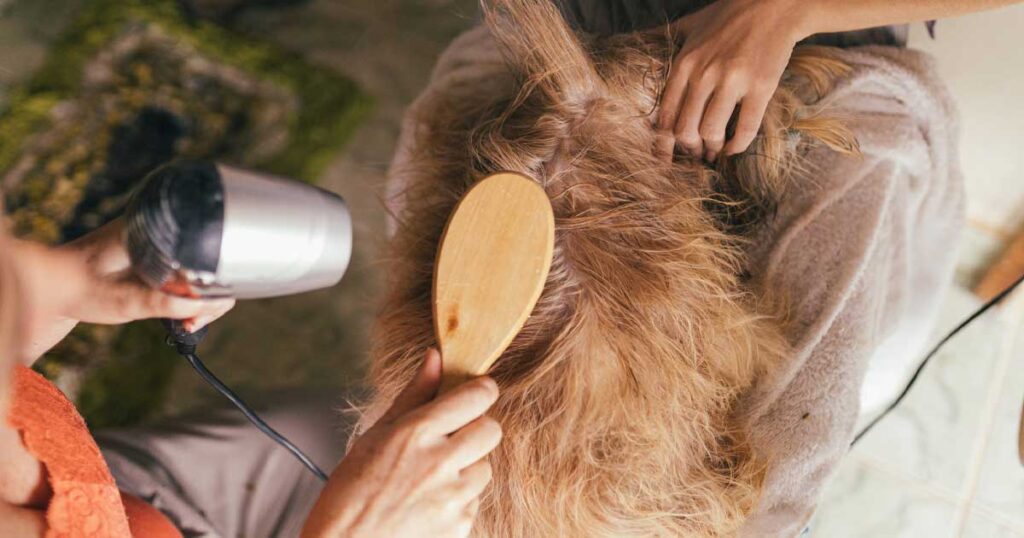
Brushing your dog isn’t just a cosmetic necessity; it’s a fundamental aspect of maintaining their overall health. The benefits of regular brushing extend beyond the superficial, impacting your canine companion’s skin, coat, and emotional well-being.
Understanding Your Dog’s Coat:
Before diving into brushing techniques, it’s essential to understand your dog’s coat type. Different breeds have distinct coat textures – some may have long, silky hair, while others boast short, dense fur. The choice of brush depends on this factor, ensuring you cater to your dog’s needs.
Slicker Brushes for Long-Haired Breeds:
Long-haired breeds like the Shih Tzu, Maltese, or Afghan Hound require special attention. Slicker brushes, characterized by fine, short wires close together, are ideal for detangling and removing loose fur. Begin brushing at the tips and work your way to the roots, preventing unnecessary discomfort for your furry friend.
Bristle Brushes for Short-Haired Breeds:
Short-haired breeds like the Beagle or Dachshund benefit from bristle brushes. These brushes have densely packed natural bristles that remove loose fur and distribute the coat’s natural oils. Brush in the direction of hair growth to keep the skin smooth and shiny.
Frequency Matters:
How often you brush your dog depends on breed, coat length, and shedding patterns. Long-haired breeds may need daily brushing to prevent matting, while short-haired breeds might do well with a weekly session. Consistency is key – regular brushing keeps their coat in top condition and allows you to monitor their skin for any abnormalities.
The Pleasure of Bonding:
Brushing sessions aren’t just about maintaining your dog’s appearance; they also provide an excellent opportunity for bonding. Turn grooming into a positive experience by associating it with treats, praise, and gentle touch. This positive reinforcement makes the process enjoyable for your dog and strengthens the bond between you.
Checking for Hitchhikers:
While brushing, take the time to inspect your dog’s coat for unwanted visitors like ticks and fleas. Early detection can prevent these pests from causing discomfort or transmitting diseases. If you notice any irregularities or persistent scratching, consult your veterinarian for appropriate preventive measures.
Addressing Mats and Tangles:
Gentle de-matting tools can be a lifesaver for long-haired breeds prone to matting. When encountering a mat, please resist the urge to pull or cut it out, which can cause pain and harm the skin. Instead, use a mat splitter or detangling spray to ease through knots, ensuring a pain-free grooming experience for your dog.
Tailoring Techniques to Your Dog’s Sensitivity:
Every dog is unique, and their sensitivity to grooming varies. Pay attention to your dog’s cues – if they show signs of discomfort or anxiety, proceed with patience and gentleness. Gradually introduce them to the brushing process, rewarding positive behavior to create a positive association.
Incorporating these brushing basics into your dog grooming routine will keep your pet looking their best and contribute to their overall health and happiness. Grooming is more than a chore; it’s an opportunity to show your dog love and care while ensuring they lead a comfortable and content life.
Bathing Bliss: A Soothing Ritual for Your Furry Friend
Bathing your dog is more than just a routine; it’s an opportunity to bond and ensure their hygiene. While it’s tempting to think of bath time as a chore, with the right approach, it can become a soothing ritual for both you and your canine companion.
Choosing the Right Shampoo:
The first step in a successful bath is selecting an appropriate shampoo. Dogs have different skin types, and using the wrong shampoo can lead to dryness, irritation, or allergic reactions. Consult your veterinarian to determine the best shampoo for your dog’s needs. Whether your dog has sensitive skin, a specific skin condition, or just a thick double coat, there’s a shampoo tailored for them.
Preparation is Key:
Before turning on the water, ensure you have everything you need within arm’s reach. This includes towels, the chosen shampoo, a non-slip mat for the tub, and any additional grooming tools you may need. This preparation streamlines the process and minimizes stress for your dog.
Water Temperature Matters:
Imagine stepping into a freezing or scalding shower – it’s not a pleasant experience. Dogs feel the same way. Make sure the water is lukewarm, testing it with your wrist to ensure it’s comfortable. Dogs have more sensitive skin than humans, so what might be a warm shower for you can feel too hot for them.
Gentle Techniques for a Calm Experience:
Many dogs are wary of water, so introducing them to baths gradually is crucial. Start by letting them explore the bathroom without the water running. Reward them with treats and praise to create positive associations. When it’s time for the actual bath, use a gentle approach. Wet them slowly, starting from their back and avoiding their head. Use a handheld sprayer or a cup to pour water gently over them.
Lathering with Care:
Once your dog is wet, systematically apply the shampoo. Start from the neck and work your way down, particularly to areas where dirt and odors accumulate, such as the paws and underbelly. Massage the shampoo in gentle, circular motions. This not only cleanses but also provides a relaxing massage for your pet.
Rinsing Thoroughly:
Inadequate rinsing can lead to skin irritation, so be diligent in removing all traces of shampoo from your dog’s coat. Use the same systematic approach you used for applying the shampoo, ensuring no residue remains. Leftover shampoo can cause itching and discomfort, undoing the positive aspects of the bath.
Post-Bath Pampering:
Once your dog is squeaky clean, it’s time for post-bath pampering. Gently towel-dry your dog, removing excess water from their ears, paws, and underbelly. Some dogs tolerate blow-drying but use a low-heat setting and keep the dryer at a safe distance to avoid stress.
Conclusion:
Bathing your dog doesn’t have to be a stressful event. By approaching it with patience, the right products, and a gentle touch, you can turn bath time into a positive experience for you and your furry friend. As you witness your dog’s coat gleaming and their tail wagging in contentment, you’ll appreciate the soothing ritual that bathing has become in your shared journey of companionship. Happy bathing!
3. Ear Cleaning: The Key to Healthy Canine Ears
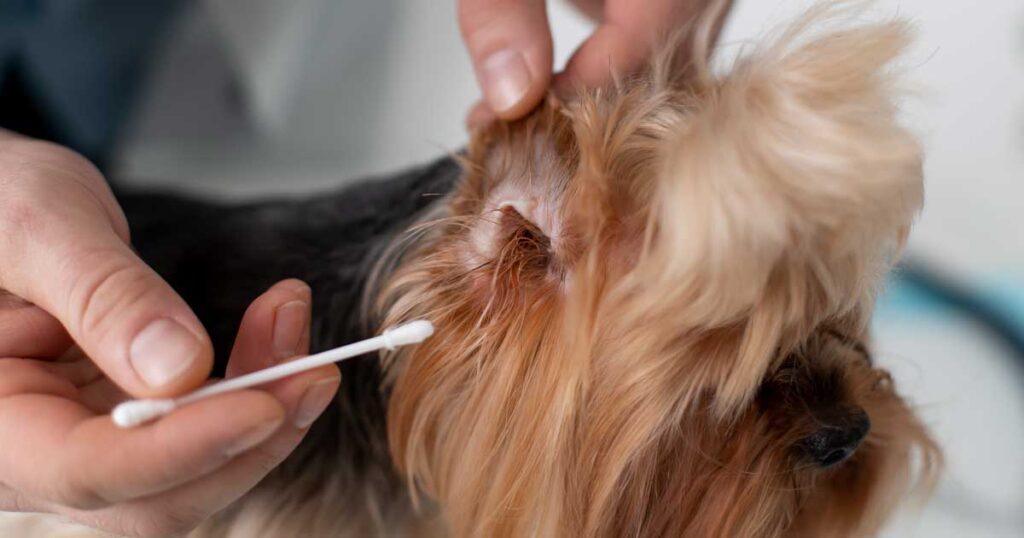
While ear cleaning may seem like a minor aspect of dog grooming, it plays a significant role in maintaining your furry friend’s overall health. Dog ears, especially those with floppy or hairy characteristics, are prone to accumulating dirt, wax, and even moisture, creating an environment conducive to bacterial and yeast infections. In this section, we’ll explore the importance of ear cleaning, the proper techniques involved, and signs that indicate your dog may need attention.
Why Ear Cleaning Matters:
Dogs have a more complex ear structure than humans, with an L-shaped ear canal that makes it easier for debris to get trapped. Regular ear cleaning helps prevent a range of potential issues:
Preventing Infections: The warm, moist environment within a dog’s ear can be a breeding ground for bacteria and yeast. Regular cleaning helps remove the conditions contributing to ear infections, a common ailment in many breeds.
Addressing Wax Buildup: Dogs naturally produce earwax, but an excess can lead to blockages and discomfort. Regular cleaning ensures that wax doesn’t accumulate to levels that impede hearing or cause pain.
Detecting Abnormalities: Ear cleaning is an excellent opportunity to inspect your dog’s ears for any signs of abnormalities. Redness, swelling, foul odor, or unusual discharge could indicate an underlying issue that requires veterinary attention.
Proper Techniques for Ear Cleaning:
When it comes to cleaning your dog’s ears, it’s crucial to follow a gentle and cautious approach:
Gather Supplies: Before you begin, gather the necessary supplies – a vet-recommended ear cleaning solution, cotton balls, and a soft cloth.
Choose the Right Moment: Pick when your dog is calm and relaxed. Positive reinforcement, such as treats and praise, can help create a positive association with ear cleaning.
Inspect the Ears: Before applying any solution, visually inspect your dog’s ears. Look for redness, swelling, or discharge. If you notice anything unusual, consult your veterinarian before proceeding with cleaning.
Apply the Ear Cleaning Solution: Squirt the recommended amount of ear cleaning solution into your dog’s ear. Gently massage the base of the ear for about 30 seconds. This helps distribute the solution and loosen any debris.
Wipe Away Debris: Use a cotton ball or soft cloth to wipe away the loosened debris from the ear. Never insert anything like cotton swabs into the ear canal, as this can push debris further or cause injury.
Repeat if Necessary: If the ears are filthy, you may need to repeat the process. However, avoid excessive cleaning, as this can lead to irritation.
Signs Your Dog Needs Ear Attention:
Understanding when your dog requires ear cleaning is crucial. Keep an eye out for the following signs:
Frequent Head Shaking: Excessive head shaking can indicate discomfort or irritation in the ears.
Scratching or Rubbing at the Ears: If your dog is persistently scratching or rubbing its ears, it may be a sign of discomfort or itchiness.
Unpleasant Odor: A foul smell emanating from the ears could signal an infection or excessive wax buildup.
Changes in Behavior: Behavioral changes, such as increased irritability or a reluctance to have the ears touched, may indicate an issue.
Conclusion:
Regular ear cleaning in your dog grooming routine is a proactive measure to ensure your canine companion enjoys optimal ear health. By understanding the importance of ear cleaning, mastering the proper techniques, and staying vigilant for signs of trouble, you contribute to your dog’s overall well-being. If you ever have concerns about your dog’s ears or encounter persistent issues, consult your veterinarian for professional guidance and care. Happy cleaning!
4. Teeth Maintenance: Unlocking the Secrets to Canine Dental Health
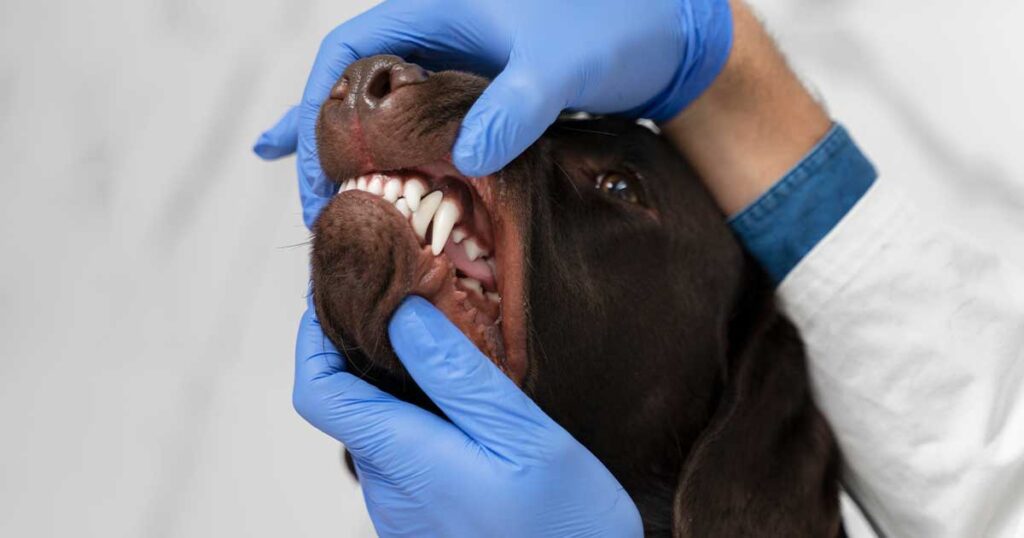
While many aspects of dog grooming focus on the external appearance of your furry friend, dental care is a critical component that directly impacts your dog’s overall health. Neglecting your dog’s teeth can lead to severe issues, including periodontal disease, infections, and systemic health problems. In this section, we’ll explore the ins and outs of canine dental care to ensure your dog sports a shiny coat and a healthy smile.
Importance of Dental Hygiene:
Many pet owners underestimate the significance of dental care for their dogs. Like humans, dogs can suffer from plaque and tartar buildup, leading to gingivitis and periodontal disease. These conditions cause discomfort for your canine companion and lead to more severe health issues, such as heart and kidney problems.
Choosing the Right Tools:
To begin maintaining your dog’s dental health, start by selecting the right tools. Dog-friendly toothbrushes and toothpaste are readily available in pet stores. Never use human toothpaste, as it often contains ingredients that can harm dogs. Opt for toothpaste with flavors appealing to your dog, such as poultry or beef, to make the experience more enjoyable for them.
Establishing a Brushing Routine:
Introducing a regular brushing routine is critical to adequate dental care. Start slowly by allowing your dog to become familiar with the toothbrush and toothpaste. Begin with short sessions and gradually increase the duration as your dog becomes more comfortable. Positive reinforcement, such as treats and praise, can help create a positive association with tooth brushing.
5. Professional Grooming Services: Elevating Your Dog’s Grooming Experience
While many pet owners embrace the DIY approach to grooming, there’s a distinct advantage to entrusting your furry friend to the hands of a professional groomer. Professional grooming services offer expertise, precision, and specialized care that can be challenging to achieve at home. Let’s explore the unique benefits of professional grooming for your beloved canine companion.
Expertise and Breed-Specific Knowledge:
Professional groomers undergo extensive training to understand the specific grooming needs of various dog breeds. From Poodles to German Shepherds, each breed requires a tailored grooming approach. Professional groomers can provide breed-specific haircuts, ensuring your dog looks fantastic and maintains a coat conducive to their breed standards.
Quality Equipment and Products:
Grooming involves a range of tools and products, and professional groomers invest in high-quality equipment to ensure the best results. From top-notch clippers to specialized shampoos, these professionals have access to products that may not be readily available to the average pet owner. This contributes to a more effective grooming session and enhances the overall well-being of your dog’s coat and skin.
Early Detection of Health Issues:
During grooming sessions, professional groomers are trained to observe your dog’s overall health. They can identify potential issues such as lumps, skin infections, or abnormalities that go unnoticed at home. Early detection allows for prompt veterinary attention, preventing minor problems from escalating into more significant health concerns.
Reducing Stress for Both Pet and Owner:
Grooming at home can be a stressful experience for both the pet and the owner. Professional groomers are skilled in handling dogs of all temperaments and can manage the grooming process efficiently. Additionally, many grooming salons provide a calm and comfortable environment designed to reduce stress for the dogs, with soothing music, pleasant scents, and a focus on creating a positive experience.
Specialized Services:
Beyond brushing and bathing, professional grooming services often include additional specialized treatments. This may involve de-shedding therapies, pedicures, or even creative grooming options for those pet owners who enjoy a bit of flair. These extra services contribute to your dog’s overall well-being and aesthetic appeal.
Time and Convenience:
Grooming can be a time-consuming process, and for busy pet owners, finding the time to maintain a regular grooming routine at home can be challenging. Professional groomers provide a convenient solution, allowing you to schedule appointments that fit your busy lifestyle. This ensures your dog receives the necessary grooming care without adding extra stress to your routine.
In conclusion, while DIY grooming has its merits, opting for professional grooming services offers many benefits beyond a tidy appearance. The expertise, specialized care, and additional services provided by professional groomers contribute to your canine companion’s overall health, happiness, and well-being. Consider incorporating professional grooming into your pet care routine to give your furry friend the pampering they deserve.
Conclusion:
Mastering dog grooming techniques is an essential part of responsible pet ownership. Whether you choose to tackle grooming at home or seek the expertise of a professional, the key is consistency and attention to your dog’s individual needs. By incorporating these techniques into your routine, you’ll keep your furry friend looking fabulous and contribute to their overall health and happiness. Happy grooming!

Meet Biplab Roy, the passionate voice behind our blog’s delightful tales of furry and feathered companions. As the proud owner of a charming pet shop and a thriving farm, Biplab’s life revolves around the enchanting world of pets. With a heart full of love for animals and a wealth of experience in caring for them, Biplab brings a unique perspective to our community of pet enthusiasts.
Biplab’s journey into the realm of pets began with a deep-seated affection for these lovable creatures. His pet shop isn’t just a business; it’s a sanctuary for pet lovers seeking advice, supplies, and a warm community. From chirpy birds to playful puppies and everything in between, Biplab’s shop is a haven for those who share his passion.
But Biplab’s connection with animals doesn’t end at the pet shop door. His bustling farm is a testament to his commitment to providing a happy and healthy life for all creatures under his care. Whether it’s the joyous barks of dogs or the gentle clucking of hens, Biplab’s farm is a symphony of harmonious coexistence.
Through the pages of our blog, Biplab shares his insights, anecdotes, and valuable tips on pet care, drawing from his hands-on experience as a devoted pet owner and caretaker. His articles are a delightful blend of heartwarming stories, practical advice, and a genuine love for the diverse world of pets.
Join Biplab on this journey as he explores the ups and downs of pet ownership, offering a warm and knowledgeable companion for fellow pet enthusiasts. Whether you’re a seasoned pet owner or considering bringing a new furry friend into your life, Biplab’s words are sure to resonate and inspire, making your journey into the wonderful world of pets even more rewarding.

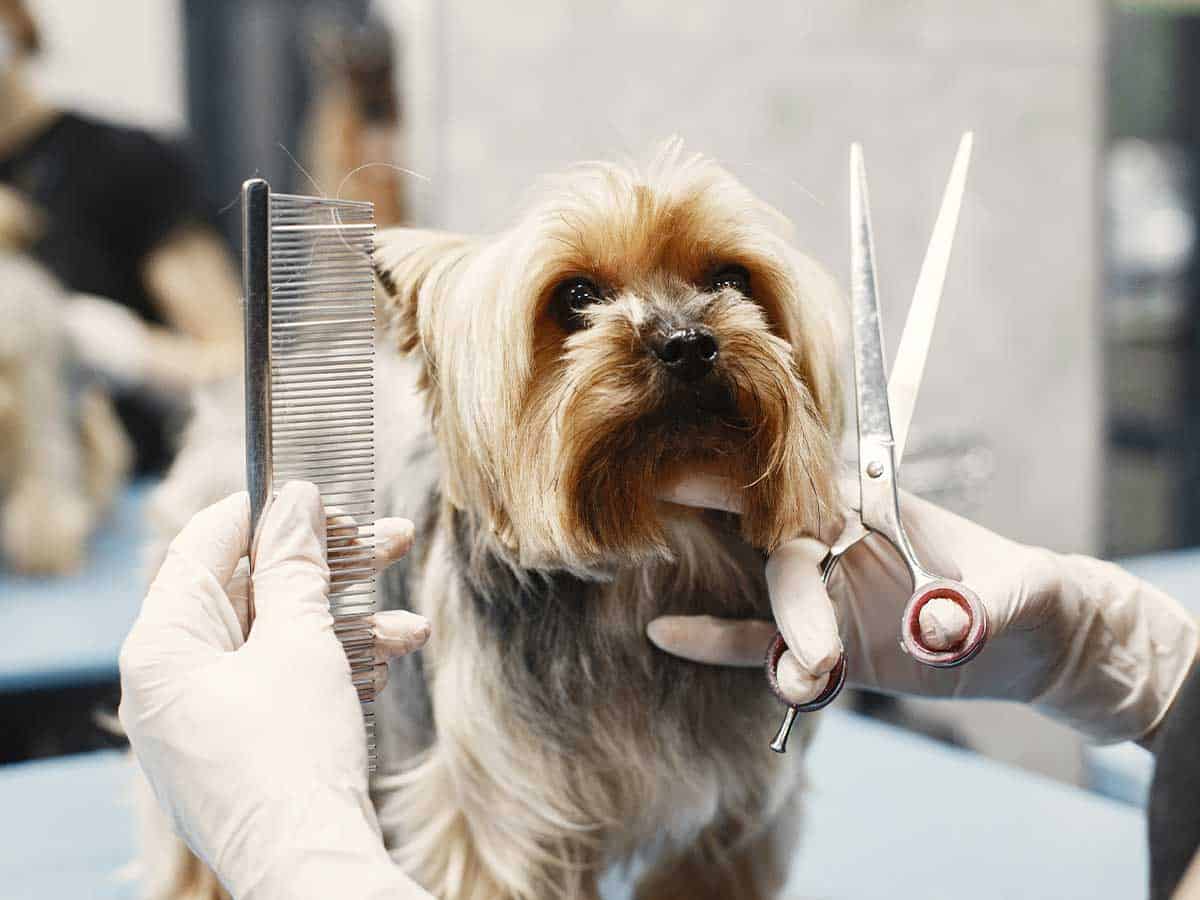
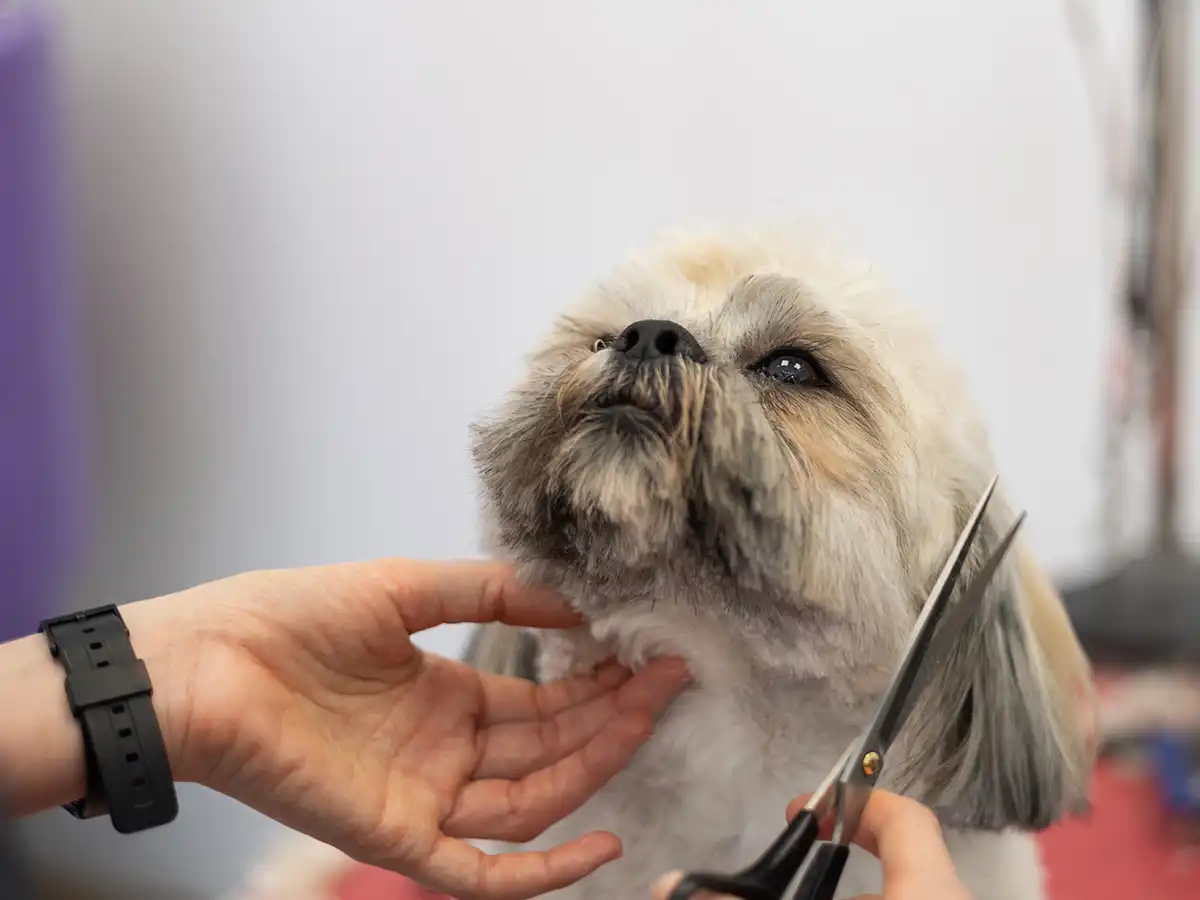
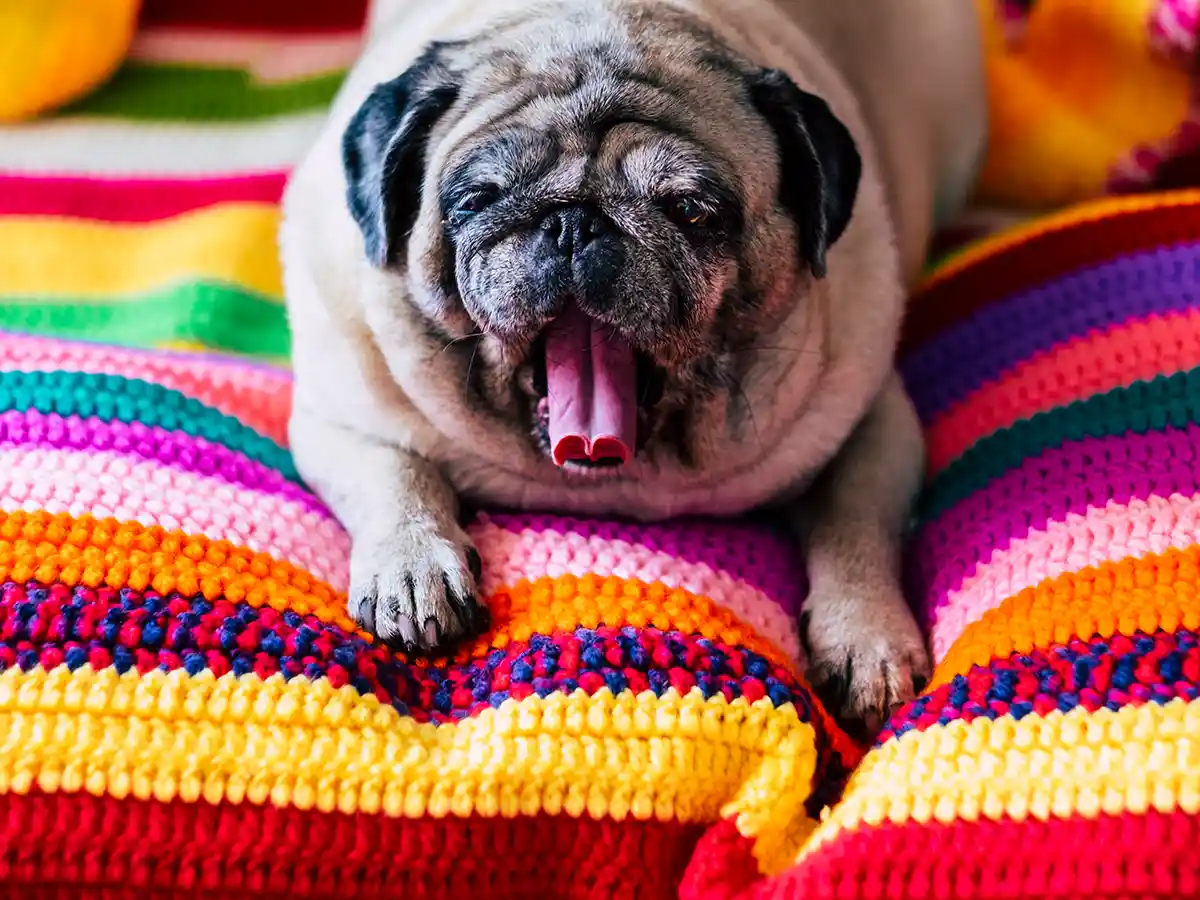
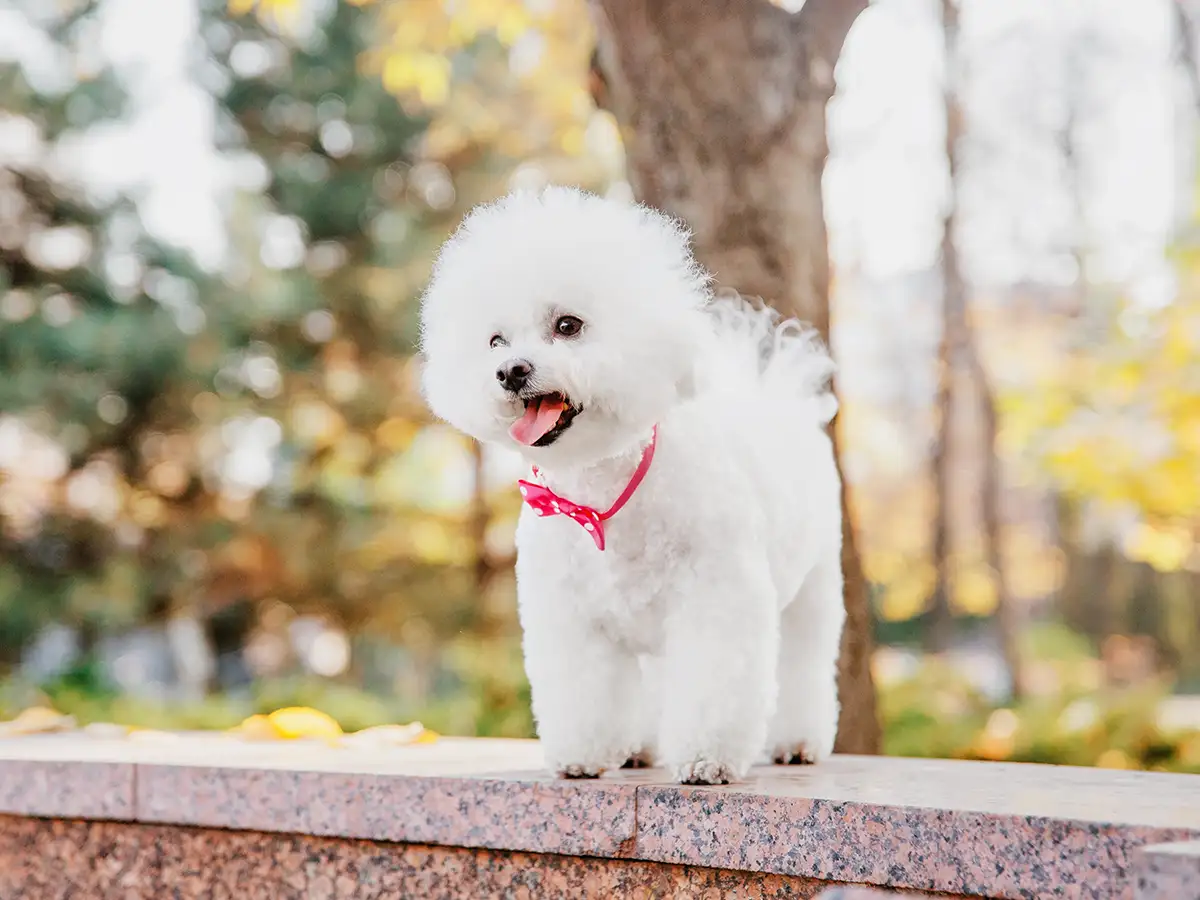
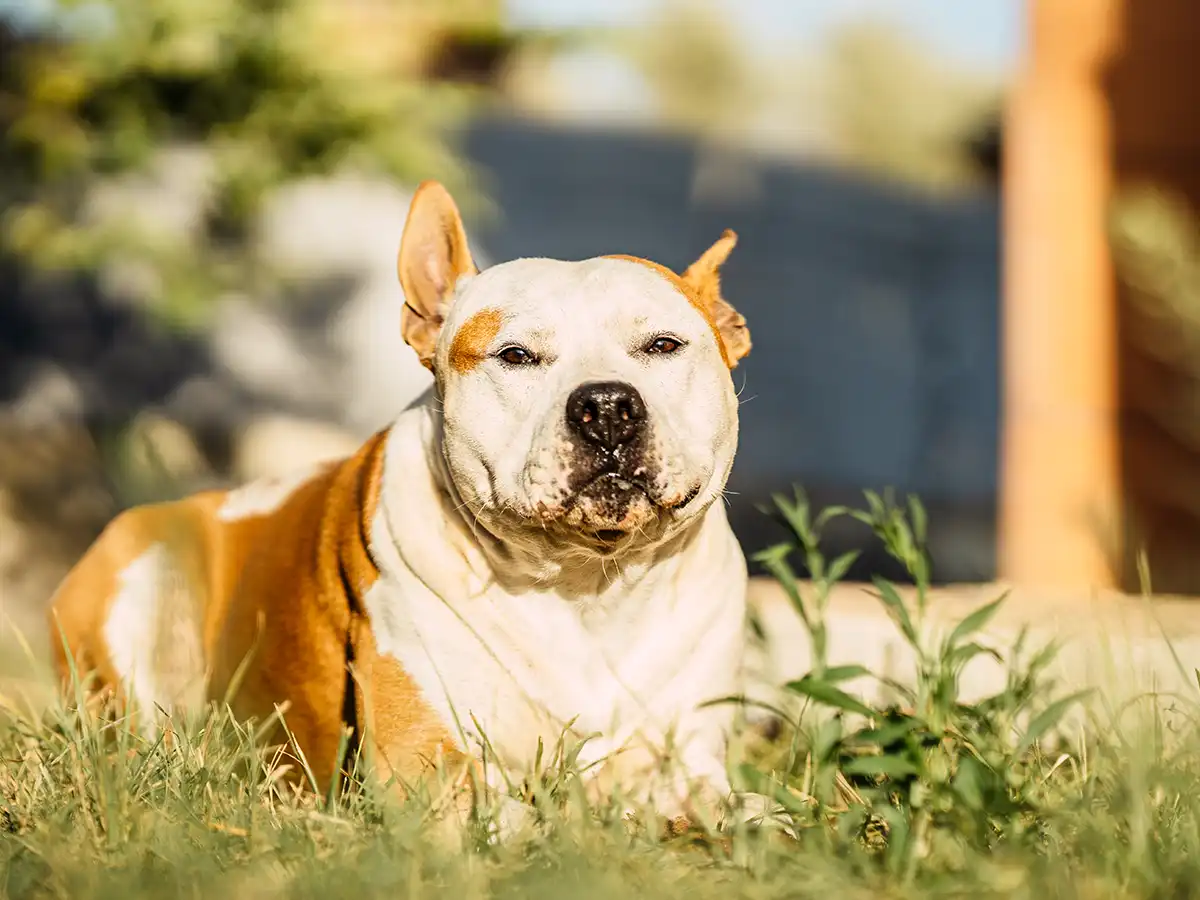

4 Comments
[…] fluffy white fur is one of its hallmark traits. But such beauty comes with responsibility. Regular grooming is a must to keep their coat in tip-top shape. This is something to consider when thinking about […]
[…] regular check-ups are a must to keep your bulldog in top shape. And let’s not forget about grooming; those adorable wrinkles need regular cleaning to prevent infections. It might sound like a lot, […]
[…] spirits! Managing allergies while enjoying the company of a Beagle is entirely feasible. Regular grooming, investing in air purifiers, and keeping Beagles off certain furniture can significantly minimize […]
[…] striking feature of the Indian Spitz is their beautiful, dense fur coat. It requires regular grooming to keep it shiny and healthy. Their expressive eyes are another captivating trait, often reflecting […]